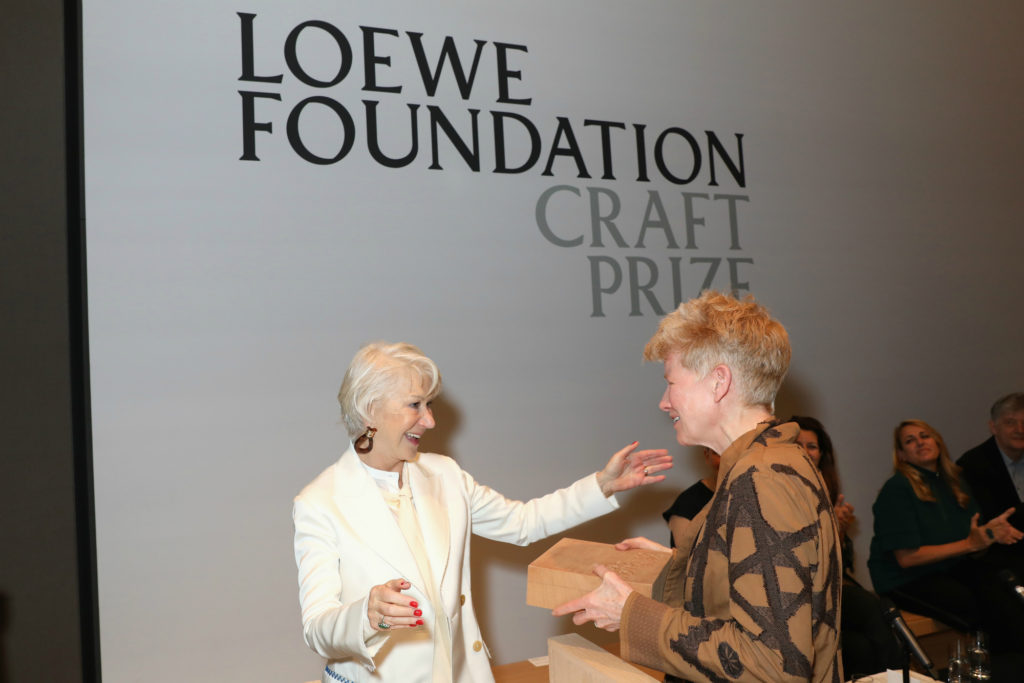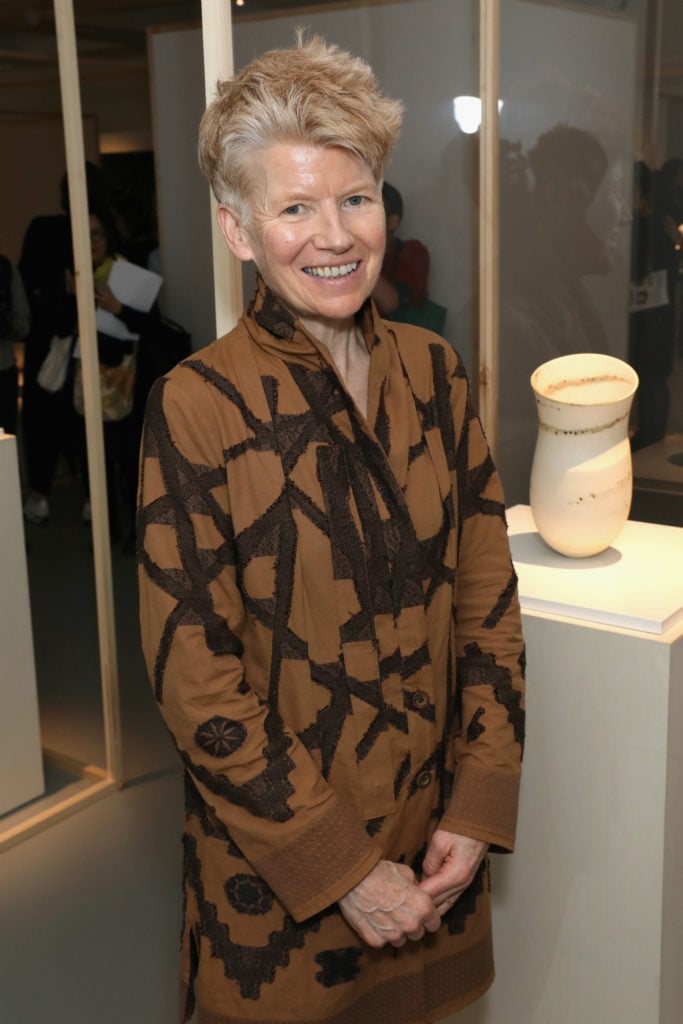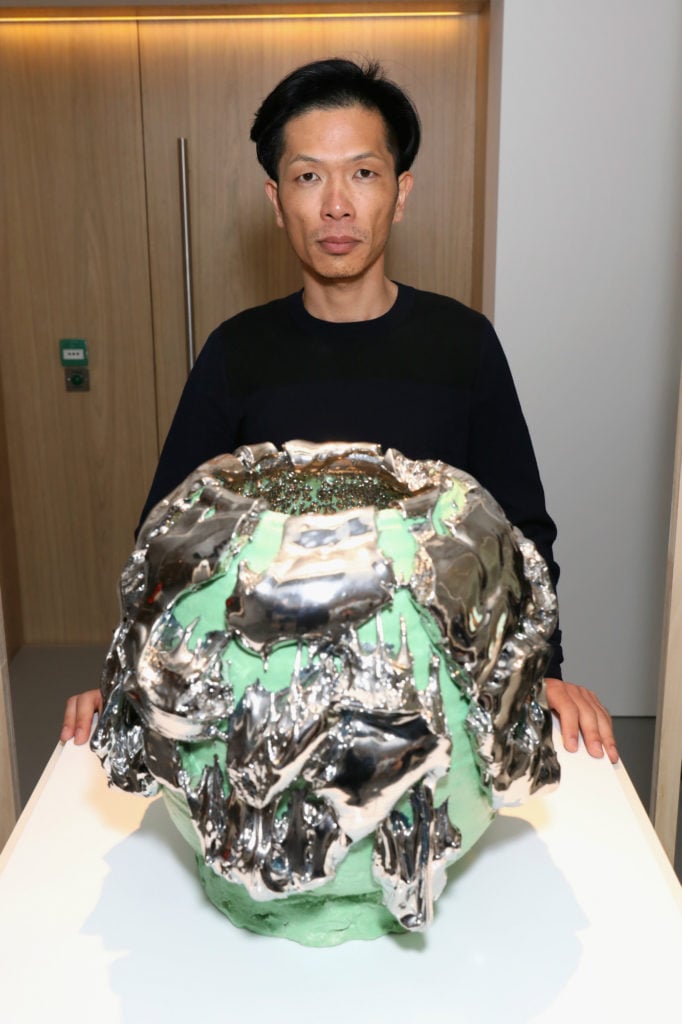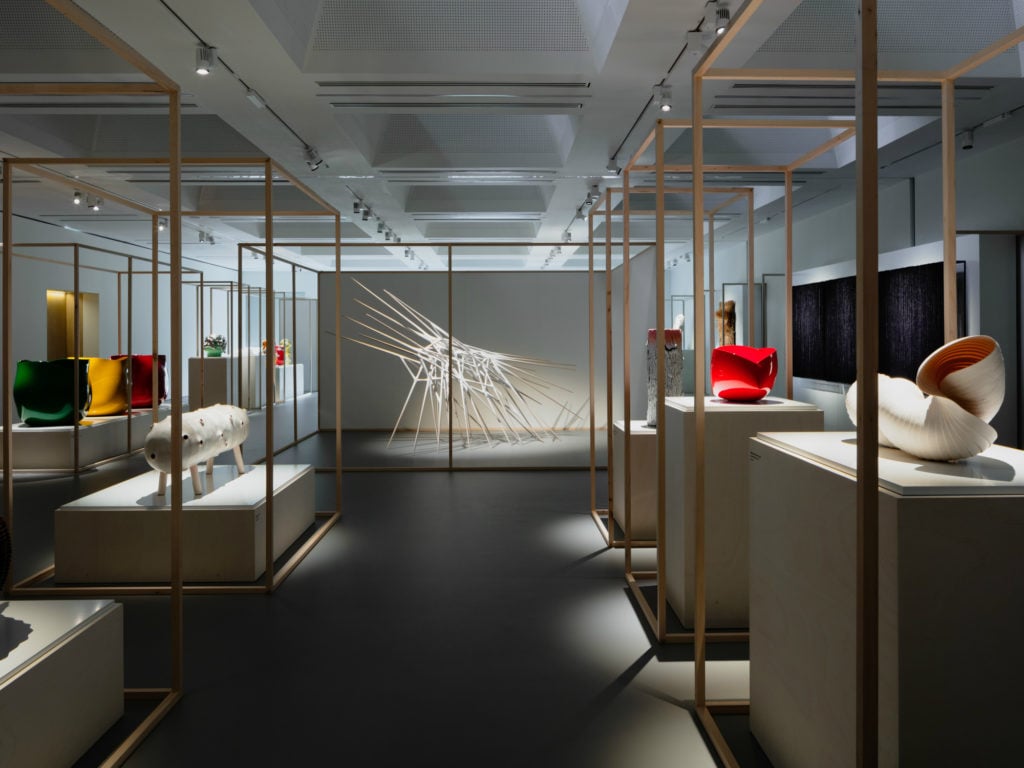Art & Exhibitions
Classical Ceramicist Jennifer Lee Wins the 2018 Loewe Craft Prize
The judges choose timelessness over radical innovation as the luxury brand flies the 30 finalists to London for an emotional awards ceremony.

The judges choose timelessness over radical innovation as the luxury brand flies the 30 finalists to London for an emotional awards ceremony.

Javier Pes

The judges of the Loewe Foundation’s Craft Prize chose classicism over radical daring by awarding the Scottish-born, London-based ceramicist Jennifer Lee its 2018 prize. A popular winner, she received a silver trophy, which comes with a cash prize of €50,000 ($60,000), from the actor Helen Mirren at London’s Design Museum on Thursday.
It was a tearful experience for the star presenter. Mirren apologized for being emotional. “Sorry, I’m an actor,” she said, adding that it was “deeply and profoundly moving,” to see the 30 finalists’ work on display. Before handing over the glittering trophy, she led the applause of all the finalists.
All 30 finalists, chosen from nearly 1,900 entries from around the world, had been flown to London by the foundation created by the Madrid-based luxury brand three decades ago. (The brand is now part of the LVMH group.) Nearly a third were from Asia. Loewe launched the prize in 2016 after Jonathan Anderson became the company’s creative director. He was one of this year’s judges, along with the inaugural prize winner, Ernst Gamperl. The German artist, best known for his work in wood, told artnet News that Lee’s handmade stoneware clay vessel, which is colored with metallic oxides, “gave him goosebumps.”

Jennifer Lee with her prize-winning ceramic, Pale, Shadowed Speckled Traces, Fading Elipse, Bronze Specks, Tilted Shelf (2017). Courtesy of Loewe Foundation.
Lee, who has works in more than 40 public collections, including London’s Victoria and Albert Museum, the British Museum, LACMA and the Met in New York, praised Loewe for creating an award that “pays such attention to the man-made and craft when so much is digital.” She confessed that she does not normally enter competitions but was prodded by her husband, the artist and designer Jake Tilson, and their daughter. Her work is currently on show in a group exhibition at the Fitzwilliam Museum in Cambridge, and she has a show coming up in Kyoto in Japan in the fall. Fellow ceramicist Edmund de Waal, who has bridged the traditional craft-fine art market divide with his sculptural installations of pots, is a long-standing admirer of her work.

Takuro Kuwata received a special mention for his radical tea bowl made of porcelain, platinum, and steel. Courtesy of Loewe Foundation.
Two finalists were given honorable mentions and each received a €5,000 ($6,000) prize. Takuro Kuwata, from Japan, presented a highly untraditional tea bowl made of green glazed porcelain covered in melted platinum and steel. The other artist was Simone Pheulpin from France, who was described as a “self-taught textile sculptor.” Her work on show Croissance XL (XL Growth) (2017) is made from densely wrapped white cotton, transforming fabric recycled from old car tires into an object that at first glance could be finely carved stone.
Gamperl and Lee both embrace the word “craft” and its long tradition. Other finalists included a self-described “straw artist,” jewelers, sculptors, and a glass artisan—reflecting the diversity of the work in the Design Museum exhibition, which opens to the public on Friday. While a proud craftsperson, Jennifer Lee doesn’t like to categorize herself. “It is interesting that so many artists are working in ceramics,” she says. “But then they have always done so: Gauguin, Picasso, Tàpies.”

Christopher Kurtz, Singularity (2012), installation view of the Loewe Craft Prize exhibition at the Design Museum. Courtesy of Loewe Foundation.
The US artist Christopher Kurtz, one of two Americans to make the final cut, presented a large, sculptural work titled Singularity (2012). Based in New York’s Hudson Valley, he studied fine art and then landscape architecture at Harvard before seeking out the sculptor Martin Puryear to learn how to make things in wood with his hands. “I was a 22-year-old, straight out of college when I became Martin’s studio assistant,” he recalls. Although Kurtz set out on his own as a sculptor and maker of studio furniture more than a decade ago, “I can’t escape from his shadow,” he says, laughing. Like several of the other finalists, his career blurs the boundary between fine art, design, and craft. The segregation between genres is lessening in the US, he thinks. “More galleries are dealing in fine art, collectible design, and craft,” he says.
For the Design Museum, which is a high-temple of industrial design, the exhibition of handmade objects is something of a departure from the norm. Its director Deyan Sudjic, who was one of the judges, referred to it as a “strand” in design. Next week he welcomes another strand, a celebration of the fashion designer Azzedine Alaïa.
Loewe Craft Prize 2018, May 4 through June 17, Design Museum, London